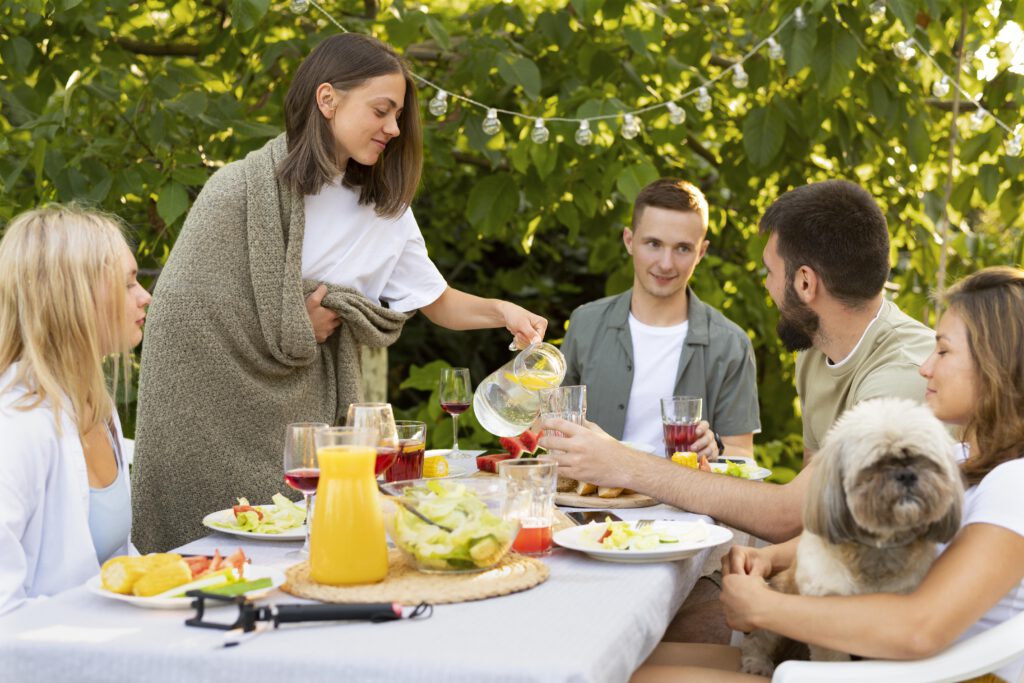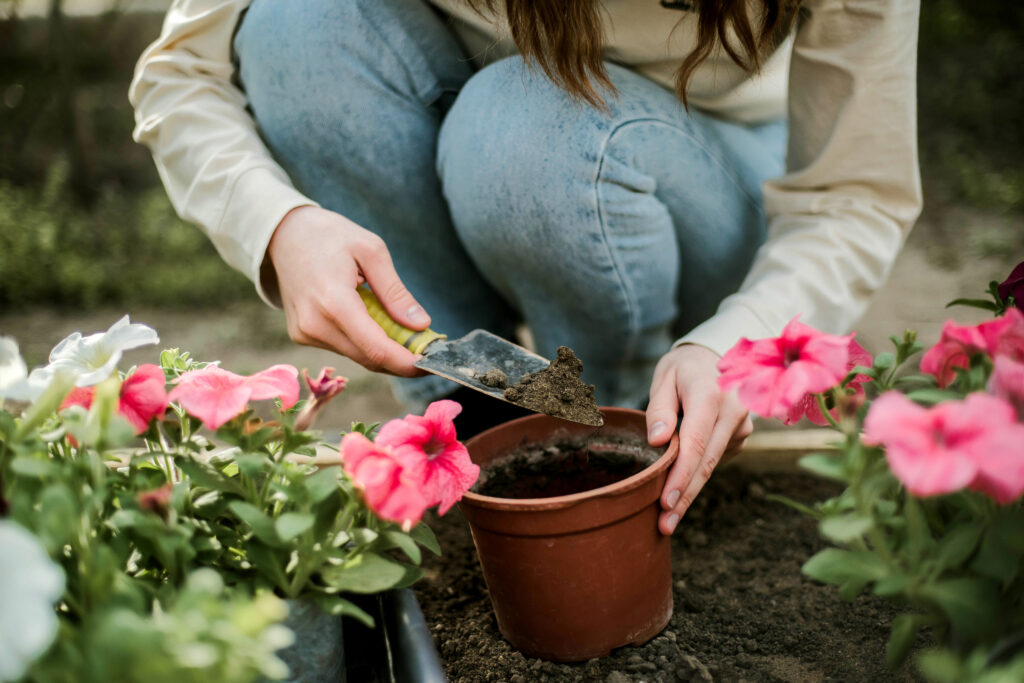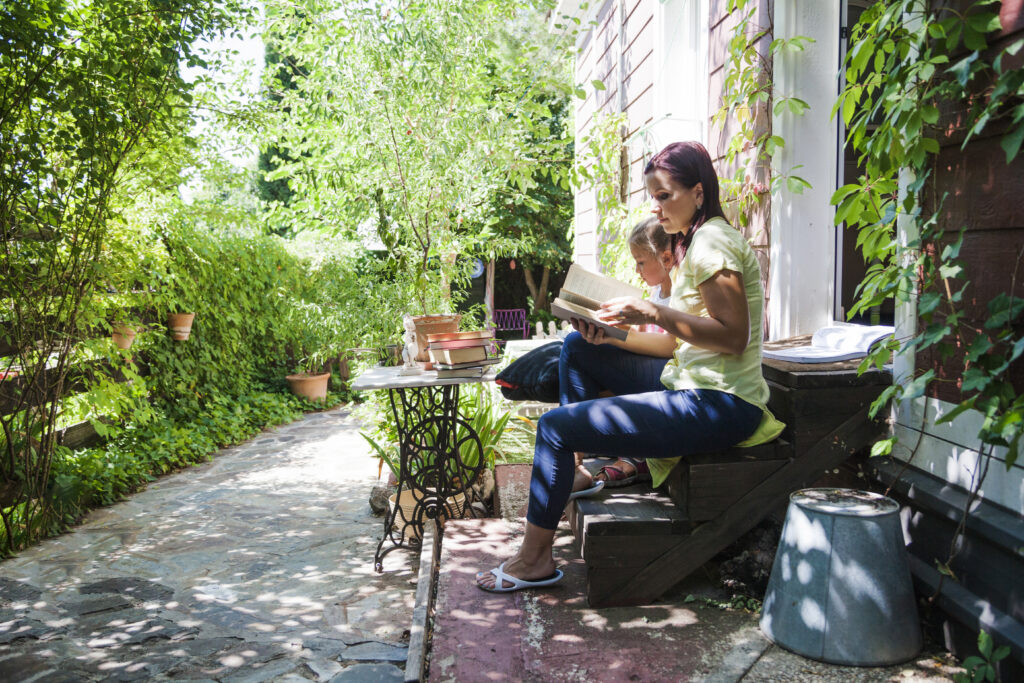With days getting longer and summer fast approaching, Dutchies and internationals around the Netherlands are gearing up to greet the warm months. The best way to do so? By transforming your space into a summer oasis.
Whether they have a flat with a balcony, a backyard, or just a small bit of sidewalk outside their front door, the Dutch love to decorate their space with garden furniture to enjoy the sunny months.
There’s just one hurdle: it’s hard to relax in the sunshine when your moment of rest and enjoyment is clouded by the fact that most garden furniture is extremely unsustainably made.
The importance of an eco-friendly garden
In recent years, sustainability trends have shifted toward circular economy principles, emphasizing the need for products designed for more prolonged use, recyclability, and minimal waste production — and we love to see this.

However, especially when decorating our space — be it indoor or outdoor—we still often fall for a good ol’ piece from Action and IKEA rather than investing in quality furniture.
READ MORE | 7 innovative Dutch projects for a sustainable future
In our gardens, for example, using high-quality, weather-resistant materials can ensure that your outdoor furniture can withstand Dutch wind and rain without succumbing to wear and tear, reducing the need for frequent replacements and minimising waste.
Where do I start?
If the responsibility of making sustainable choices overwhelms you as much as the drop aisle at your local Albert Heijn, I feel you first.
But it doesn’t have to all be so daunting. Here are some of our best tips you can follow.
Small changes with big impacts
First, recycling and upcycling play a crucial role in minimising landfill waste. This commitment to reusing materials conserves resources while reducing pollution.
Supporting companies like Keter that are dedicated to sustainable practices is another impactful action anyone can take. When we choose products from such companies, we effectively use our purchasing power to advocate for a greener planet.
Last, mindful consumption is about distinguishing between needs and wants. We can all significantly reduce our environmental footprint by purchasing only what’s necessary. This approach helps conserve resources and encourages a more thoughtful and sustainable way of living.
Following sustainable trends
Just like trends in clothing can range from fast fashion to sustainable, the same range exists for outdoor furniture — and it’s our role to choose the eco-friendly option.
One major gardening trend this year is the new perennial movement, which emphasises a more naturalistic and wild aesthetic in gardens. This approach leans heavily on native plants, creating landscapes that require less maintenance and supporting local wildlife and pollinators.

Adapting to climate change is another significant focus.
For example, you can choose plants that can handle hotter or colder temperatures and adjust your watering schedules. Drought-tolerant native plants like bee balm, black-eyed Susan, and butterfly weed are recommended for their resilience and support of local ecosystems.
Together, these behaviours contribute to a more significant movement toward sustainability, highlighting how individual actions can collectively protect the environment.
Choosing brands wisely
Another way to decorate your home sustainably is by paying attention to the brands you support.
Some outdoor furniture brands, such as Keter, ensure that their product design philosophy aligns with current sustainability trends. They focus on creating wares that meet consumers’ current needs and contribute to a more sustainable future.

And these are the brands we need to support. Let’s stick with Keter as an example here.
This specific company operates 18 factories and two distribution centres in nine countries. It sells to over 100 countries worldwide, including the United States, United Kingdom, Canada, France, Germany, Italy, Spain, and the Netherlands.
It aims for zero landfill waste in its manufacturing processes. It aims to inspire and enable people worldwide to enjoy their living spaces while also being mindful of their environmental impact.
READ MORE | 6 Dutch innovations that could change the way we live
As Alejandro Pena, Keter CEO, explains: “Sustainability should be seamlessly integrated into our daily routines.
“Thanks to technological advancements, everything we make is functional, long-lasting, recyclable, and does not harm the environment. Earth is our home and workplace. We like it and the people who live here.”

Outdoor areas are unique extensions of our homes, where we create memories and enjoy nature. The company recognises this, offering products that meet various needs while respecting the environment. Its offerings blend practicality with eco-friendliness; Keter strongly emphasises creating long-lasting products.
So, how do you get the most out of your outdoor space? By making sure you can enjoy it with good conscience. Here’s to a sustainable summer of 2024!
How do you like to keep your gardening practices eco-friendly? Share your best tips in the comments!
